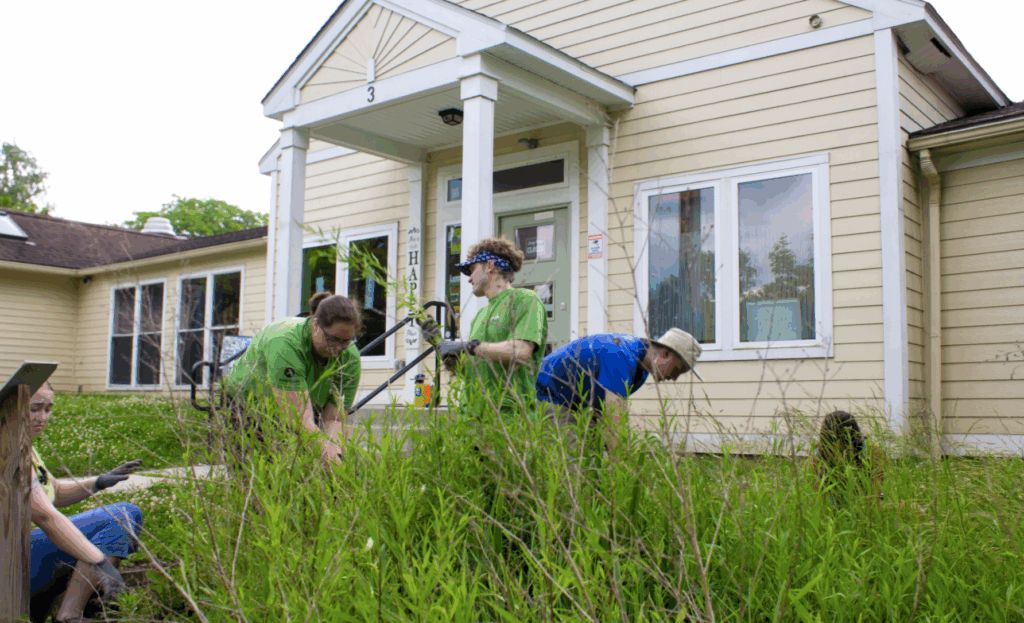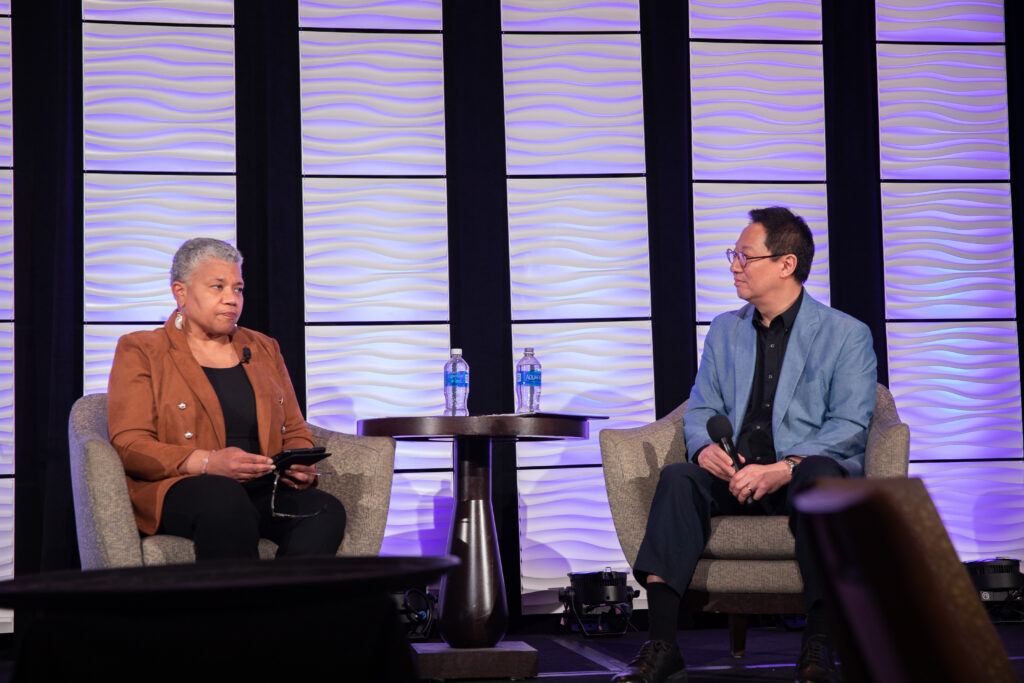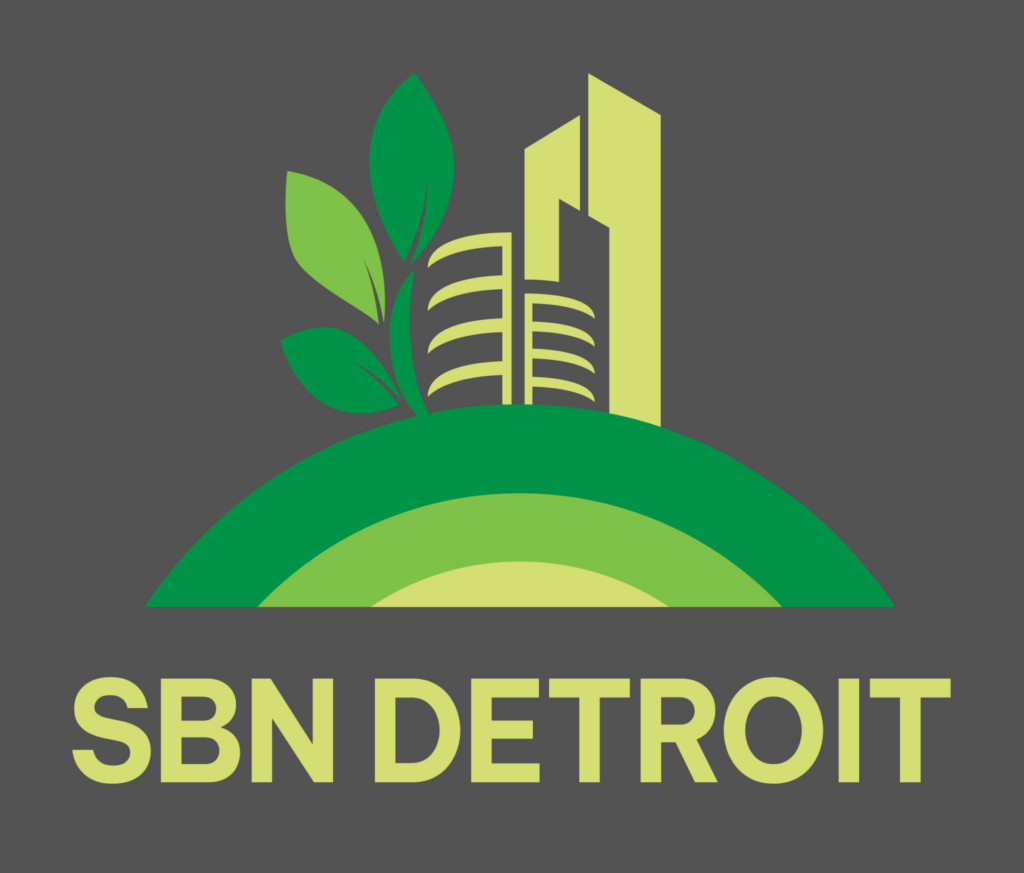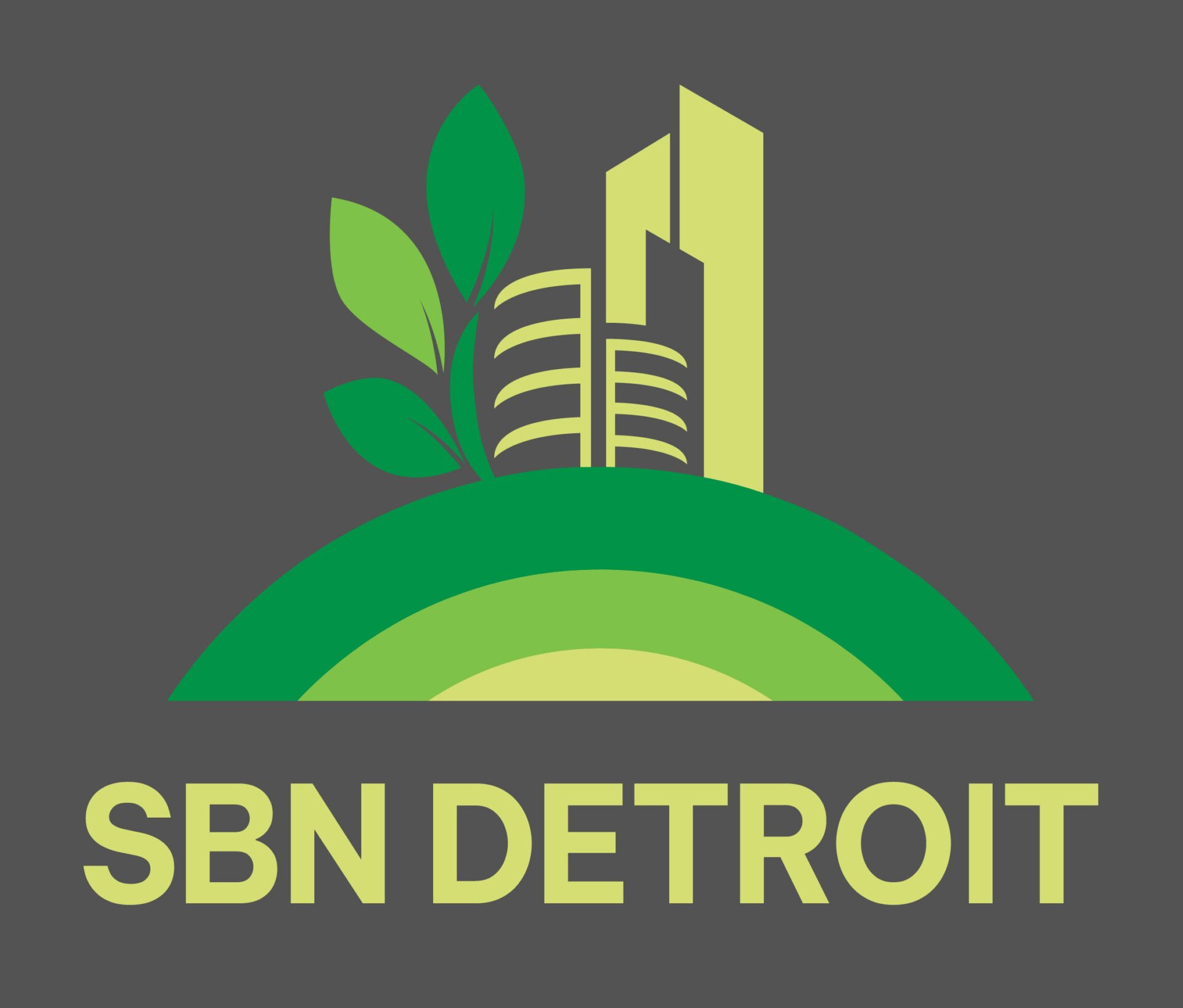Ann Arbor’s Climate Strategy

In 2020, the City of Ann Arbor adopted A²ZERO, a climate action strategy designed to achieve community-wide carbon neutrality by 2030. The plan outlines a framework for embedding sustainability into city operations, economic growth, and everyday decision-making, while also emphasizing equity and long-term resilience. One of the most visible efforts under A²ZERO is the Bryant project, a first-of-its-kind initiative to transition an entire neighborhood—home to more than 250 households—toward carbon neutrality. The project combines energy efficiency upgrades, renewable energy, and community-centered planning to create a scalable model for neighborhood-scale decarbonization. Leading the A2ZERO program is Missy Stults, Ann Arbor’s sustainability and innovations director, who helped steer the A²ZERO plan’s rapid development and continues to guide its evolution. SBN Detroit interviewed Stults about how the plan is shaping the local economy, what other cities can learn from Ann Arbor’s approach, and the challenges and opportunities that lie ahead. Q: How is sustainability fueling the local economy in Ann Arbor, and what benefits are you seeing from the A20 plan? A: We’re working to institutionalize sustainability as part of the culture, and we are seeing it manifest in multiple ways. Tech entrepreneurs are innovating around clean energy and mobility. In the circular economy, businesses are repurposing materials or finding second lives for decommissioned electronics—like harvesting valuable parts from old phones. I see this as a movement by which people make choices not just because they’re profitable, but because they’re right, and we’re making them more convenient. Over time, that mindset fuels business innovation and economic resilience. Q: What differentiates A²ZERO from other cities? A: First, the speed. We built this plan in 82 days. Second, we never pretended it would be perfect – we focused on what was possible and necessary. We talk about the planning being a living framework for our work, something that is directional but not the directions for where we need to go. Third, we anchored it in three pillars: equity, sustainability, and transformation. Equity is the center of the work (not just a lens we look through). Sustainability means it must last well beyond any of us. Transformation acknowledges that the systems that created this crisis cannot be the systems that solve it. Lastly, we also didn’t shy away from costs. It would have been easier to gloss over the investments needed, but we were transparent. That honesty has required us to be bold and very vulnerable, and I think that differentiates the Ann Arbor process. Q: How has the strategy evolved since its 2020 adoption? A: Constantly. Telework is a good example. The original plan was written in 2019, just before the pandemic. Telework wasn’t part of it – then suddenly it became central. The plan is directional, and we adapt to cultural, political, and financial moments as they come. Another example is tree planting. Our goal was to plant 10,000 trees later in the plan, but in 2020, we pulled that forward because it was work we could do during the pandemic. We’ve now planted 11,000 trees. That’s the beauty of a living document – It allows us to be nimble while staying aligned to the overall direction. Q: If you could think freely – blue-sky style – what environmental innovation or policy would you love to see Ann Arbor implement next? A: If a flood is happening, the first thing you do is turn off the faucet before you clean up. We need that mindset here. We need building codes and regulations that stop allowing new buildings that pollute. We need aggressive codes that require polluters, such as manufacturers and industrial operators- not individuals – to take responsibility for the pollution they are creating. That kind of systemic shift is essential. Q: What key lessons can other cities learn from the Bryant project? A: The importance of trust. It’s something you can’t underestimate. The community has to determine the end goals. And you have to show up consistently, even when the answers aren’t easy. Early on, people asked, “What if Bryant gentrifies?” We didn’t have an answer – but we said that out loud and committed to figuring it out together. Persistence and vision matter. People need hope, but hope without action is empty. In Bryant, we’ve paired hope with concrete steps – like stabilizing utility bills through energy efficiency improvements- and that sequencing is critical. Now the project has momentum, and we are looking at things like installing networked geothermal. Q: Given recent setbacks—like reduced federal funding and legal barriers—what’s your strategy for sustaining progress? A: Force and persistence. There’s no option but to keep doing this work. Well, the only option is complacency, and that won’t happen. Success begets success. Our goal is to institutionalize sustainability so deeply that it doesn’t matter who is in my role – this will be part of Ann Arbor’s DNA. It’s important to note that local governments have historically had do this without much federal support. The Biden administration was an outlier. We are used to working under challenging conditions, and we will continue regardless. Q: What are some recent wins or innovations? A: In November 2024, voters approved creating the nation’s first sustainable energy utility—an opt-in utility that is supplemental to the existing investor-owned utility, and a utility that only offers energy from renewable energy sources. That’s transformative. In Bryant, we’ve secured $18 million, including a $10 million federal geothermal grant we hope is finalized soon. That would be one of the first large-scale demonstrations of an alternative heating and cooling model in the country. We’re also piloting a circularity initiative with returnable containers, which could scale into broader partnerships. I’ll stop there. There’s much more being done, but these are some good examples of the transformation that’s happening. Q: How are you tracking outcomes? A: We use a mix of metrics. Some update automatically every day into a reporting dashboard we have; others are annual. We’re close to releasing the 2024 annual report. But we also recognize that not everything that matters can
University of Michigan President Santa Ono Expands on Sustainability Agenda at SBND event

University of Michigan President Santa Ono has put sustainability and fighting climate change among his top priorities since he assumed the position in October. In addition to several programs and initiatives that are being expanded or developed, the university is now serving as the lead institution for the University Climate Change Coalition which convenes 23 leading North American universities to work toward climate action on campuses, in communities, and at a global scale. Ono spoke about his sustainability agenda for UofM at an April 5 luncheon attended by more than 250 stakeholders and business and organization leaders. The event was sponsored by the Erb Institute and hosted by the Sustainable Business Network Detroit and Inforum. Tom Lyon, faculty director at the Erb Institute, kicked off the event by saying, “As we build toward expertise on sustainability the challenge is to think globally and act locally together, and the state, the universities, businesses, and all sectors have to be involved.” John M. Erb, Erb Family Foundation chair, echoed that sentiment commenting, “We are all important stakeholders in balancing the needs of the people, planet, and economy and working toward a more sustainable future.” Working together and the need to connect the dots toward saving the planet were primary themes. Each of us is indispensable in responding to and resolving the biggest challenge our society has ever faced and solving this emergency transcends borders, Ono said. We need to come together in the form of a nexus to benefit us and all who follow us on this planet. Ono said the university benefits from strength in numbers with 800+ sustainability faculty members, 100+ student organizations, and 8,000 Planet Blue Ambassadors. He gave a special nod to students, saying, “Their passion has wowed me, and I have found that many times it’s the students who (first) identify and develop solutions.” Some of UofM’s sustainability priorities include moving to 100% renewable purchased power by 2025, building on-campus solar installations with a capacity of 25 megawatts across the Dearborn, Flint, and Ann Arbor campuses – including Michigan Medicine and athletics – and achieving LEED Platinum status for all buildings. Ono talked about the university’s historic ties with the city of Detroit and its responsibility toward it. “The university was established in 1817 at Cadillac Square in Detroit, and Mayor Duggan took me there saying that we have a great responsibility to the city, and he’s right.” On March 6, the university announced new commitments for the $250 million University of Michigan Center for Innovation, previously known as the Detroit Center for Innovation. The project is a collaboration with Stephen Ross, chairman and majority owner of Related Companies, and the Ilitch family. Ono noted that the center will accommodate academic and community programs to include three distinct types of activity—graduate education, talent-based community development, and community engagement—all in the service of economic development and job growth for Detroit. In the spirit of collaboration, Ono also pointed out that there were people attending the event from other Michigan universities and applauded this, saying, “We have our competition on the fields and courts, but getting closer to other Michigan educational institutions is very important to UofM. We need MSU to make advances in agritech, and Wayne State University is a critical component to making advances in the city. We all need to work together and we are starting to do more of that now.” Following his speech, Telva McGruder, Chief Diversity, Equity, and Inclusion Officer for General Motors Co. and member of the advisory board for the UofM School for Environment and Sustainability, moderated a Q&A. Below are some of the key questions and takeaways. McGruder: What is your top priority as president of the University of Michigan? Ono: Addressing climate change. I’ve been very vocal that this is my number one priority. Michigan has to be a leader here. And that is the wish of the collective voices of the university as well. Students are actually pushing me, and I appreciate that so much. I have told them to hold my feet to the fire. McGruder: Regarding the notion of connecting the dots, how do you as a university leader – and how do leaders in other organizations – bring expertise together for progress? Ono: I think the different pieces of the puzzle that exist illustrate opportunity. One part of the secret sauce at UofM is that each director has the autonomy to dream and be bold. Now, we need to collaborate and form connections around these ideas. The faculty and leadership and students have wowed me with their collaborative spirit. McGruder: How can companies and organizations around the state connect with the efforts of the university? Ono: We are working on making a “front door” more clear. We are going to invest and Identify someone to knit it together and act as the gatekeeper to reduce the barrier to communication inside and outside the university. McGruder: Progress sometimes means people changing ways of doing things and letting go so that we can move forward. What are your thoughts as we move forward toward carbon neutrality on some of the things we have to encourage communities to let go of? Ono: It goes both ways. Trust is a critical point. Leaders have to earn trust. We as a university have to go into communities knowing that we have as much to learn from them as they do from us. We as a university have made mistakes along the way, and so have other institutions and companies. Addressing that truthfully is a prerequisite to going into communities and working together. McGruder: When it comes to funding, how do we help decision-makers and leaders within all sectors understand the need to spend on sustainability efforts? Ono: Addressing the climate crisis is not a bottom-line budget issue it’s a social responsibility. And what is the point of a strong financial standpoint if there’s no planet to exist on? A recording of the complete program can be found here: https://vimeo.com/815068547 Be sure


